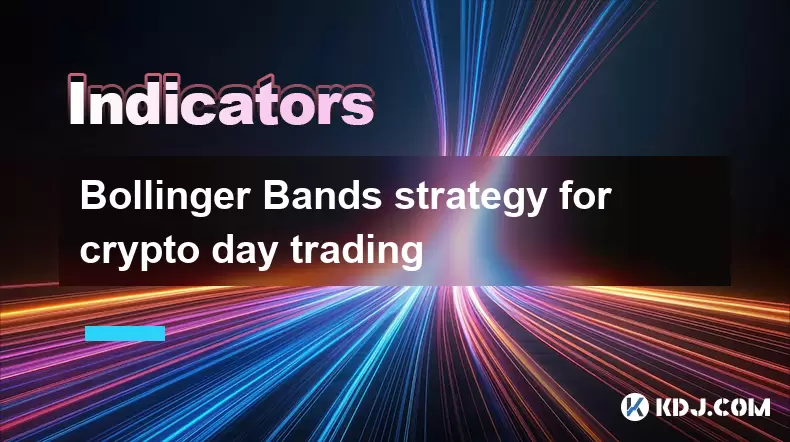-
 Bitcoin
Bitcoin $120400
1.77% -
 Ethereum
Ethereum $3615
7.90% -
 XRP
XRP $3.580
17.84% -
 Tether USDt
Tether USDt $1.001
0.06% -
 BNB
BNB $729.4
1.25% -
 Solana
Solana $179.9
5.04% -
 USDC
USDC $0.0000
0.01% -
 Dogecoin
Dogecoin $0.2311
8.22% -
 TRON
TRON $0.3226
4.04% -
 Cardano
Cardano $0.8490
12.85% -
 Hyperliquid
Hyperliquid $46.45
0.72% -
 Stellar
Stellar $0.4913
8.54% -
 Sui
Sui $4.027
2.00% -
 Chainlink
Chainlink $18.51
11.67% -
 Hedera
Hedera $0.2818
21.51% -
 Avalanche
Avalanche $24.03
7.40% -
 Bitcoin Cash
Bitcoin Cash $508.5
2.90% -
 Shiba Inu
Shiba Inu $0.00001496
3.24% -
 UNUS SED LEO
UNUS SED LEO $8.961
1.83% -
 Toncoin
Toncoin $3.264
3.13% -
 Litecoin
Litecoin $104.6
8.15% -
 Polkadot
Polkadot $4.389
6.11% -
 Uniswap
Uniswap $9.924
10.63% -
 Monero
Monero $337.9
0.49% -
 Pepe
Pepe $0.00001376
2.79% -
 Bitget Token
Bitget Token $4.830
2.46% -
 Ethena USDe
Ethena USDe $1.001
0.05% -
 Dai
Dai $1.000
0.02% -
 Aave
Aave $325.2
1.66% -
 Bittensor
Bittensor $423.7
-0.85%
Bollinger Bands strategy for crypto day trading
Bollinger Bands help crypto traders identify volatility, overbought/oversold levels, and potential breakouts by analyzing price action relative to moving averages and standard deviations.
Jul 11, 2025 at 10:35 am

Understanding Bollinger Bands in Cryptocurrency Trading
Bollinger Bands are a widely used technical analysis tool developed by John Bollinger. They consist of three lines: a simple moving average (SMA) in the middle, and two standard deviation bands above and below it. In the context of crypto day trading, these bands help traders identify overbought or oversold conditions, volatility changes, and potential price breakouts.
The upper and lower bands expand and contract based on recent price volatility. When the market is calm, the bands narrow; during periods of high volatility, they widen. This dynamic nature makes them especially useful for short-term trading strategies in the fast-moving crypto markets.
Important: The default setting for Bollinger Bands is typically a 20-period SMA with 2 standard deviations, but adjustments may be necessary depending on the specific cryptocurrency and time frame being traded.
How to Apply Bollinger Bands to Crypto Charts
Before executing any strategy, you must correctly apply Bollinger Bands to your charting platform. Most platforms like TradingView, Binance, or CoinMarketCap offer built-in indicators.
- Click on the "Indicators" menu
- Search for "Bollinger Bands"
- Select and apply to your preferred chart
Once applied, you'll see three distinct lines forming around the price action. Traders often combine this with other tools like volume indicators or RSI for confirmation signals.
Important: Ensure that the settings match your trading style. For instance, intraday traders might reduce the period from 20 to 14 or even 10 for faster reactions.
Identifying Overbought and Oversold Levels
One of the most common uses of Bollinger Bands is to detect overbought and oversold levels in the market. When the price touches or exceeds the upper band, it may indicate an overbought condition, suggesting a potential pullback. Conversely, when the price hits or goes below the lower band, it could signal an oversold scenario, possibly leading to a bounce.
However, it's crucial not to treat these levels as automatic sell or buy signals. Prices can remain at extremes during strong trends. Therefore, combining Bollinger Bands with momentum oscillators such as RSI or MACD is highly recommended.
Important: Always wait for a reversal candlestick pattern or volume confirmation before entering a trade based solely on price touching the bands.
Using Bollinger Band Squeezes for Breakout Opportunities
A Bollinger Band squeeze occurs when the bands contract tightly around the price, indicating low volatility. This often precedes a sharp price movement, either up or down. Recognizing a squeeze early can provide traders with a chance to position themselves ahead of a breakout.
To spot a squeeze:
- Observe narrowing bands
- Confirm using additional volatility indicators like the Volatility Index (VIX)
- Wait for a decisive breakout above or below the bands
When a breakout happens, traders can enter in the direction of the move, placing stop-loss orders just beyond the opposite side of the bands.
Important: A squeeze doesn't guarantee the direction of the breakout. Proper risk management and confirmation tools are essential to avoid false signals.
Combining Bollinger Bands with Other Indicators
While Bollinger Bands are powerful on their own, they become more effective when used alongside complementary tools:
- Relative Strength Index (RSI): Helps confirm overbought or oversold readings
- Moving Average Convergence Divergence (MACD): Provides trend and momentum confirmation
- Volume Bars: Show whether price movements are supported by strong buyer/seller interest
For example, if the price touches the upper band and RSI is above 70, it strengthens the case for a bearish reversal. Similarly, if the price hits the lower band and MACD shows bullish divergence, a long entry becomes more attractive.
Important: Never rely solely on one indicator. Multiple confirming signals increase the probability of successful trades.
Frequently Asked Questions
Q: Can Bollinger Bands be used for all cryptocurrencies?
Yes, Bollinger Bands are applicable across all types of cryptocurrencies. However, results may vary depending on the asset’s liquidity and volatility. High-cap coins like Bitcoin or Ethereum tend to produce clearer signals than smaller altcoins.
Q: Should I adjust Bollinger Band settings for different time frames?
Absolutely. Shorter time frames like 5-minute or 15-minute charts benefit from tighter settings (e.g., 10-period SMA), while longer time frames like 1-hour or daily charts work better with the default 20-period setting.
Q: What should I do if the price stays outside the bands for too long?
This is known as a "ride the bands" scenario, usually seen in strong trending markets. It indicates that the trend has momentum. Instead of fading the move, consider entering in the direction of the trend after a minor pullback or consolidation.
Q: Is it safe to trade based only on Bollinger Bands?
No single indicator guarantees success. While Bollinger Bands are valuable, they should always be used with other forms of analysis like volume, candlestick patterns, or support/resistance levels to filter out false signals.
Disclaimer:info@kdj.com
The information provided is not trading advice. kdj.com does not assume any responsibility for any investments made based on the information provided in this article. Cryptocurrencies are highly volatile and it is highly recommended that you invest with caution after thorough research!
If you believe that the content used on this website infringes your copyright, please contact us immediately (info@kdj.com) and we will delete it promptly.
- Giants Protocol's G Token Live Launch: What You Need to Know
- 2025-07-18 21:30:13
- Solana, Rollblock, and the Gaming Token Revolution: What's Hot Now?
- 2025-07-18 22:10:13
- Crypto 2025: Will the Bull Run Be Led by Ethereum?
- 2025-07-18 22:10:13
- XRP, Dogecoin, and Crypto Bills: What's Shaking in the Crypto World?
- 2025-07-18 20:50:13
- Trump, Family Business, and Power: A New Era of Conflicts?
- 2025-07-18 20:30:12
- Trump, Business, & Bitcoin: A Crypto Capitalist's Vision
- 2025-07-18 20:40:12
Related knowledge

Advanced RSI strategies for crypto
Jul 13,2025 at 11:01am
Understanding the Basics of RSI in Cryptocurrency TradingThe Relative Strength Index (RSI) is a momentum oscillator used to measure the speed and chan...

Crypto RSI for day trading
Jul 12,2025 at 11:14am
Understanding RSI in the Context of Cryptocurrency TradingThe Relative Strength Index (RSI) is a momentum oscillator used to measure the speed and cha...

Crypto RSI for scalping
Jul 12,2025 at 11:00pm
Understanding RSI in the Context of Crypto TradingThe Relative Strength Index (RSI) is a momentum oscillator widely used by traders to measure the spe...

What does an RSI of 30 mean in crypto
Jul 15,2025 at 07:07pm
Understanding RSI in Cryptocurrency TradingRelative Strength Index (RSI) is a momentum oscillator widely used in cryptocurrency trading to measure the...

What does an RSI of 70 mean in crypto
Jul 13,2025 at 06:07pm
Understanding the RSI Indicator in Cryptocurrency TradingThe Relative Strength Index (RSI) is a widely used technical analysis tool that helps traders...

Does RSI work in a bear market for crypto
Jul 16,2025 at 01:36pm
Understanding RSI in Cryptocurrency TradingThe Relative Strength Index (RSI) is a momentum oscillator used by traders to measure the speed and change ...

Advanced RSI strategies for crypto
Jul 13,2025 at 11:01am
Understanding the Basics of RSI in Cryptocurrency TradingThe Relative Strength Index (RSI) is a momentum oscillator used to measure the speed and chan...

Crypto RSI for day trading
Jul 12,2025 at 11:14am
Understanding RSI in the Context of Cryptocurrency TradingThe Relative Strength Index (RSI) is a momentum oscillator used to measure the speed and cha...

Crypto RSI for scalping
Jul 12,2025 at 11:00pm
Understanding RSI in the Context of Crypto TradingThe Relative Strength Index (RSI) is a momentum oscillator widely used by traders to measure the spe...

What does an RSI of 30 mean in crypto
Jul 15,2025 at 07:07pm
Understanding RSI in Cryptocurrency TradingRelative Strength Index (RSI) is a momentum oscillator widely used in cryptocurrency trading to measure the...

What does an RSI of 70 mean in crypto
Jul 13,2025 at 06:07pm
Understanding the RSI Indicator in Cryptocurrency TradingThe Relative Strength Index (RSI) is a widely used technical analysis tool that helps traders...

Does RSI work in a bear market for crypto
Jul 16,2025 at 01:36pm
Understanding RSI in Cryptocurrency TradingThe Relative Strength Index (RSI) is a momentum oscillator used by traders to measure the speed and change ...
See all articles

























































































